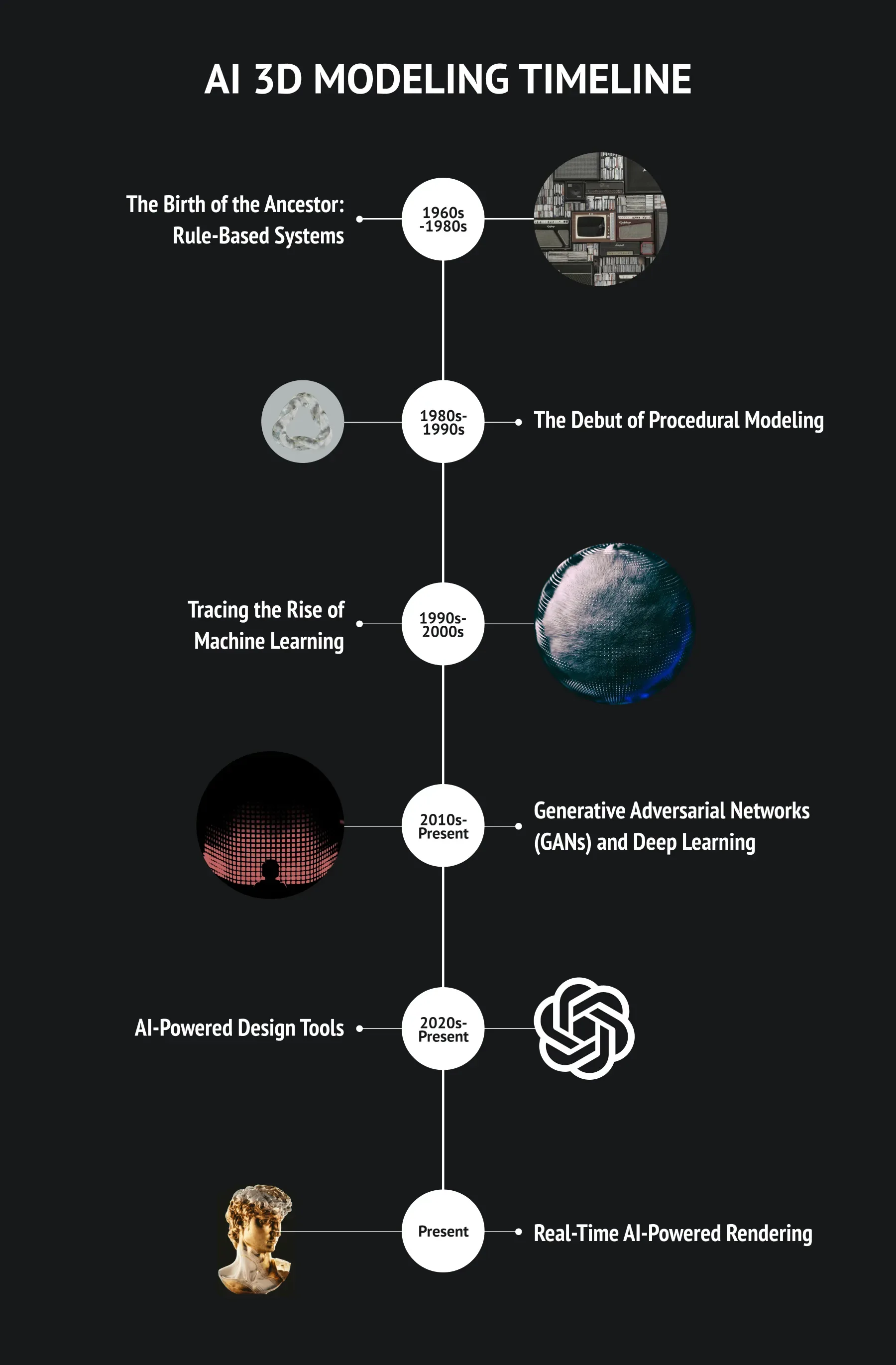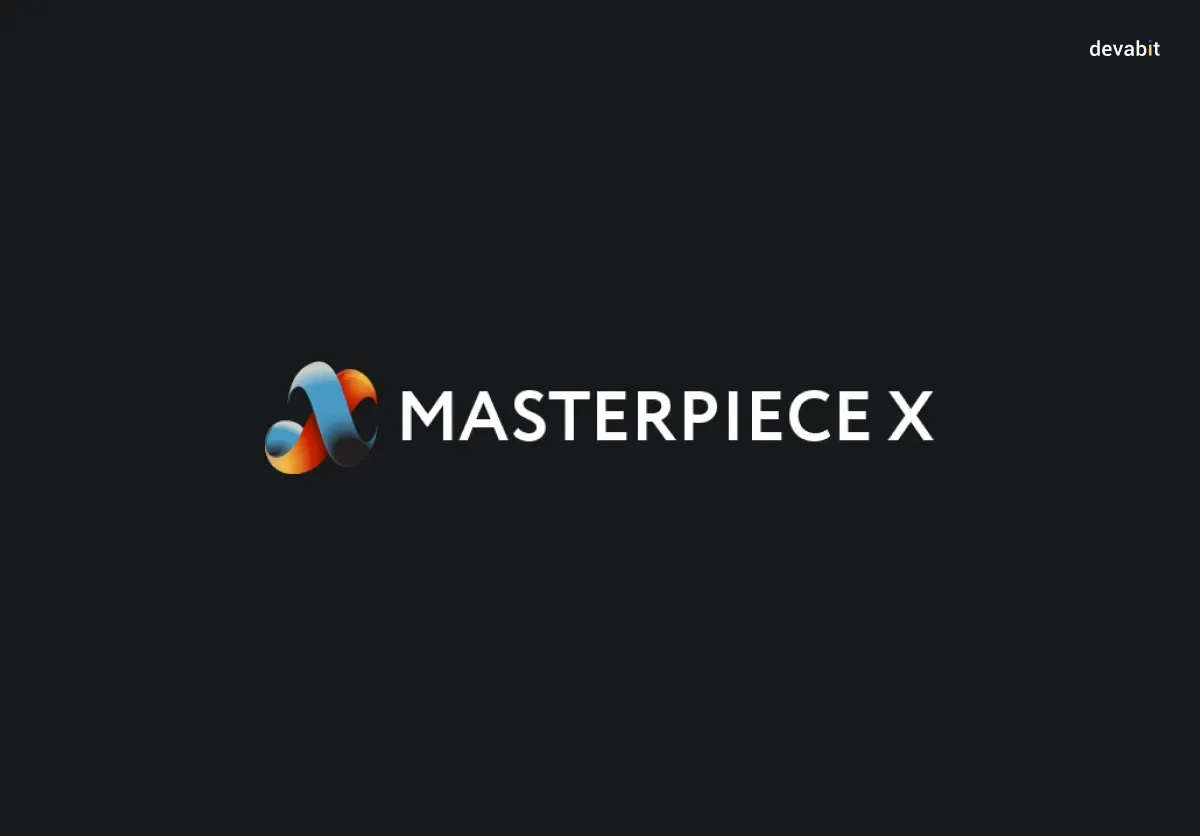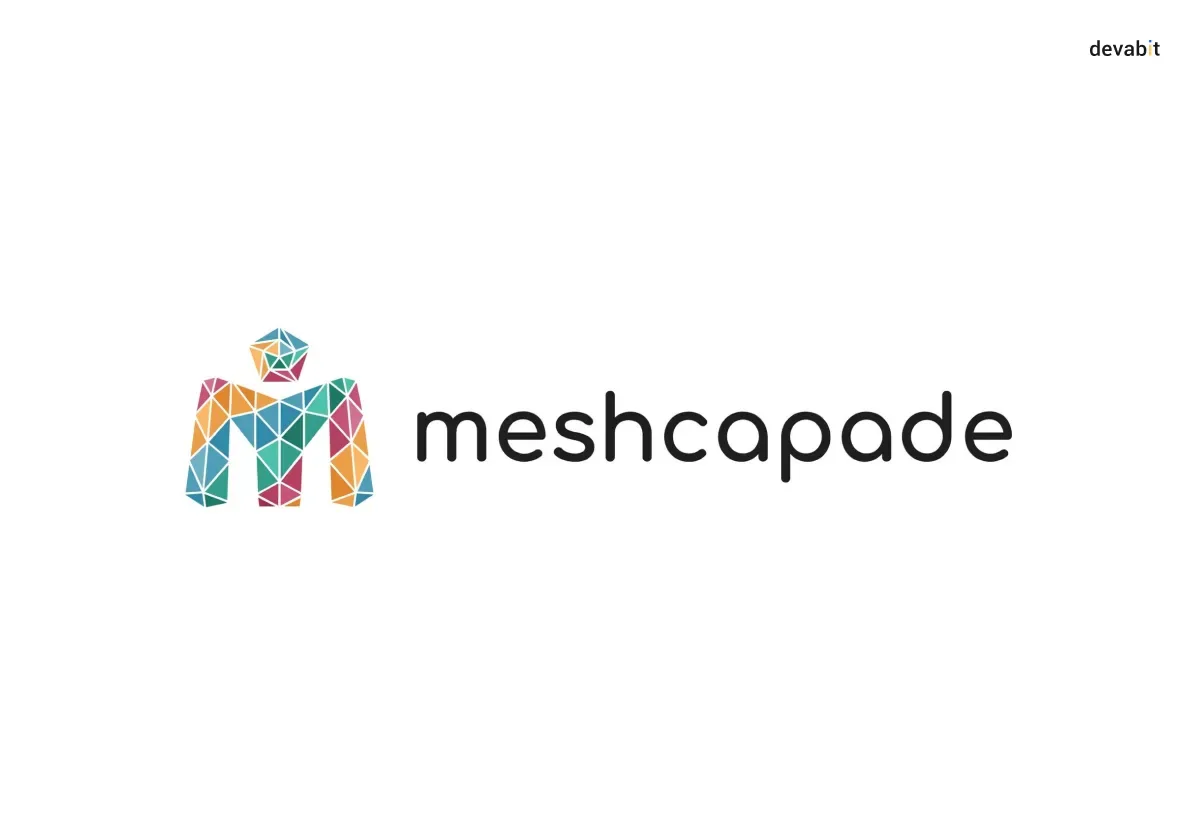From Pixels to Perfection: AI 3D Modeling 101
What does living in 2026 feel like? Well, sometimes it reminds me of The Terminator, Matrix, or Ex Machina. Please, my dear readers, do not get me wrong: I do not mean Arnold Schwarzenegger as a Cyberdyne Systems Model 101 or Trinity immersed in a lifelike artificial simulation (these characters are definitely worth your attention, though). I am rather talking about the inevitable truth that seeps through the storylines of these legendary movies, revealing the overpowering influence of artificial intelligence (AI). With the emergence of Chat GPT, Google AI, and Gemini, more and more human professions are being replaced by the mind-blowing power of AI. So, how about 3D modeling? What do innovative AI 3D modeling services like Vizcom or Recraft bring to the table? Where can you find a free AI 3D model generator? All in all, how can you get the most out of AI 3D modeling tools without sacrificing the human factor? Read our new "AI 3D modeling 101 guide" to find out the answers and get a unique list of the top AI 3D modeling tools and pro tips with real-life examples.
In short, today we will talk about:
- AI 3D modeling timeline, from its origins in the 1960s to the way we know it today.
- AI 3D modeling market overview, with rapid growth expected to reach $137.3 mn by 2032.
- The top 5 AI 3D modeling generators you should consider in 2026: Spline, Masterpiece X Studio, Vizcom, Meshcapade, and Meshy.
- The future of AI 3D modeling is threatened by the evolution of deepfakes and empowered by advances in AR/VR technology.
- Best real-life 3D modeling examples, like the Tiffany ring and the Tiffany bracelet.

The Genesis of Genius: Unveiling the Origins of AI 3D Modeling
Let us slip into the captivating chronicles of creativity by exploring the history of AI 3D modeling.
The Birth of the Ancestor: Rule-Based Systems (1960s-1980s)
Here, at the birthplace of computer-generated imagery (CGI), it is far too early to mention AI. In this early stage, 3D modeling relied on rule-based systems where engineers manually encoded directions for the computer to follow while generating 3D models. "What a primitive way to create something," you may think. Well, you are entirely correct: rule-based systems is a complex and outdated ancestor of 3D modeling. Still, this is the starting point in our "history of AI 3D modeling" journey.
The Debut of Procedural Modeling (1980s-1990s)
Oh, what a wonderful time, 80s! Yet, we are here not for this little twinge of nostalgia for the good old days. This historical period marked the introduction of procedural modeling, a unique technique that enables artists to create more complex shapes by defining algorithms instead of specifying individual geometric primitives. Notably, this crucial approach brought a significant level of sophistication to 3D modeling, providing a stable foundation for more complex designs. At this point, it is still too early to bring AI into the conversation...
Tracing the Rise of Machine Learning (1990s-2000s)
The late 20th century is associated with the revolutionary integration of machine learning techniques, which marked a significant shift in the history of AI 3D modeling. During this period, neural networks and genetic algorithms were employed for multiple purposes, such as shape recognition and optimization. These advancements laid the groundwork for more intelligent and adaptive 3D modeling methods.
Generative Adversarial Networks (GANs) and Deep Learning (2010s-Present)
Ready, set.. Let us introduce Generative Adversarial Networks (GANs) and deep learning, which were invented in the 2010s. GANs, created by Ian Goodfellow in 2014, played a crucial role in generating high-quality realistic 3D models. Deep learning algorithms, in turn, served as particularly convolutional neural networks (CNNs) and proved to be highly effective in tasks like image-to-image translation, empowering the emergence of detailed 3D representations.
AI-Powered Design Tools (2020s-Present)
Here we go, entering the era of AI-powered design tools. Leveraging advanced algorithms, machine learning, and neural networks to automate and enhance various aspects of the 3D modeling workflow, AI 3D modeling provides artists and designers with innovative methods of creating 3D models. From conceptualization to rendering, AI-powered design tools assist designers at each step of the way.
Real-Time AI-Powered Rendering (Present-?)
In recent years, real-time rendering has become a real buzzword in the realm of AI 3D modeling. Capable of generating realistic 3D modeling scenarios in real-time, AI-powered rendering engines have drastically transformed the way virtual environments are perceived and created. Surprisingly, it takes only a few seconds to acquire a high-fidelity 3D model. With only a few images, a real-time AI-powered rendering engine can accurately simulate anything from a small flower to an entire building.

AI 3D Modeling Market
Numbers speak louder than words: the mind-blowing predictions concerning the constant growth of the AI 3D modeling market are truly impressive.

Best AI 3D Modeling Generators: 2026 Breakdown
Traveling through the intricacies of AI 3D modeling history was undoubtedly interesting, but let us take a look at the list of top tools utilized for AI 3D modeling in 2026.
1. Spline
This collaborative AI 3D modeling tool operates in the browser, enabling users to create 3D content and interactive experiences in the blink of an eye. Leveraging a robust set of features to generate next-gen 3D designs, Spline opens a new door for creativity. This game-changing tool stands out as a user-friendly web platform tailored for designers at all levels of expertise, regardless of their skills or prior experience. Unlike most 3D tools like Cinema 4D or Blender, Spline offers a streamlined learning curve. Additionally, it does not overwhelm users with many complex settings and features, turning the AI 3D modeling process into an enjoyable journey. According to the creators of Spline, this unique tool provides a wide array of opportunities, including the creation of 3D scenes, editing materials, real-time collaboration, animated 3D transitions, and more.
Pricing:
- Basic subscription (FREE)
- Super subscription ($9 / month)
- Super Team subscription ($12 per team editor/ month)

2. Masterpiece X Studio
"We aim to make 3D effortless." This is how the company describes its core philosophy. Based on Natural Language Processing (NLP) technology, this AI 3D model generator easily transforms descriptive language requests into cutting-edge 3D models. Compatible with popular 3D software like Unity, Blender, and Unreal Engine, Masterpiece provides a dynamic sandbox environment where users can iterate, experiment, and create cost-effective prototypes while customizing them according to individual preferences. While initiatives like Latent Labs on Discord have previously explored the concept of generating 3D assets from text, Masterpiece X represents a notable advancement in this rapidly evolving domain.
Pricing:
- 250 credits (FREE)
- 750 credits ($10.99 /month)
- 1500 credits ($19.99 /month)
- 3000 credits ($36.99 /month)

3. Vizcom
As a cloud-based platform that leverages AI to accelerate the rendering process, this AI 3D model generator aims to revolutionize industrial design. This innovative and forward-thinking brand enables users to render lifelike 3D models in seconds instead of days. Thanks to the exclusive mesh of high-quality photorealism, creative discovery tools, and incredible user control, Vizcom provides the ability to generate unique product combinations. Hence, users can examine every option to make the best design decision, building a reliable path from imagination to reality.
Pricing:
- Starter subscription (FREE)
- Professional subscription ($49 per editor/month)
- Organization subscription ($250 per editor/month)
- Enterprise subscription (custom price)

4. Meshcapade
Even though Meashcapade takes 4th place in our "AI 3D modeling Generators" list, it is the winner when it comes to uniqueness and creativity. This AI 3D model generator, also known as the digital human company, relies on the SMPL Standard family of body, face, hand, and foot models, the only commercially available solutions for 3D human technology that utilize machine learning to portray true-to-life body shape and motion. Meshcapade is dedicated to humanizing technology by constructing the fundamental "digital human layer" brick by brick and, therefore, revolutionizing the 3D generation of human figures. With user-friendly APIs and web-based utilities, Meshcapade empowers users to effortlessly convert images, videos, 3D scans, motion capture data, and text into detailed 3D models of humans.
Pricing:
- FREE trial
- Non-subscription-based prices (depend on the service)

5. Meshy
Another great AI 3D model generator is Meshy, a unique production suite that possesses AI texturing and AI modeling mechanisms that streamline the creation of 3D models. Thanks to a vast library of customizable 3D assets, this tool is suitable for animators, industrial designers, and architects as well. From modeling to texturing, this avant-garde AI 3D modeling tool offers an intuitive AI suite that eases the whole process associated with creating state-of-the-art 3D models. Moreover, the service ensures seamless integration with key industry standards and workflows.
Pricing:
- FREE subscription
- Pro subscription ($16 /month)
- Max subscription ($48 /month)

AI 3D Modeling Challenges & Future Trends
In the ever-evolving world of AI 3D modeling, everything is possible. Hence, let us consider the key drivers and barriers associated with AI 3D modeling.
Deepfake Technology: An Opportunity or Risk Ahead?
Since AI 3D modeling technology produces highly realistic human representations, the possibility of generating misleading content, such as deepfakes, also grows at a rapid pace. Nowadays, 3D-generated models of famous people like politicians or influencers are often used to manipulate society, raising numerous ethical and data privacy concerns. Thereupon, addressing the importance of stringent AI 3D modeling regulations is paramount during the next decade.
Immersive Technology: A Powerful Booster or Complex Innovation?
In recent years, the adoption of Augmented Reality (AR) and Virtual Reality (VR) has been on everyone's lips. As a powerful driving force, immersive technology fuses digital and real-world components to construct new dimensions without limits or rules. Utilized in a wide array of industries, from healthcare to automotive domains, AR/VR gets more and more adherents. Thus, the mind-blowing popularity of immersive content raises the need for more convenient production options, contributing to the development of AI 3D modeling.

Real Cases Instead of Boring Phrases: Our Unique Approach to 3D Modeling in 2026
With a team of talented 3D modeling artists, devabit goes beyond the traditional concept of 3D modeling, introducing innovative approaches that rock the world.
Exclusive R&D 3D Modeling Project for Tiffany
Even though devabit was not commissioned to tackle this complex challenge, our skilled 3D modeling team developed the internal R&D solution created for our own sake. Aimed at introducing an innovative approach to representing Tiffany's outstanding products in 3D, we designed the Tiffany 3D model of T1 Narrow Diamond Hinged Bangle and Tiffany 3D model of Knot Ring in Yellow Gold with Diamonds.
Recent Publications
Don't miss out! Click here to stay in touch.
Discover More

Relevant Articles View all categories
View all categories CONNECT WITH US WE’RE READY
TO TALK OPPORTUNITIES
THANK YOU! WE RECEIVED YOUR MESSAGE.
Sorry
something went wrong




